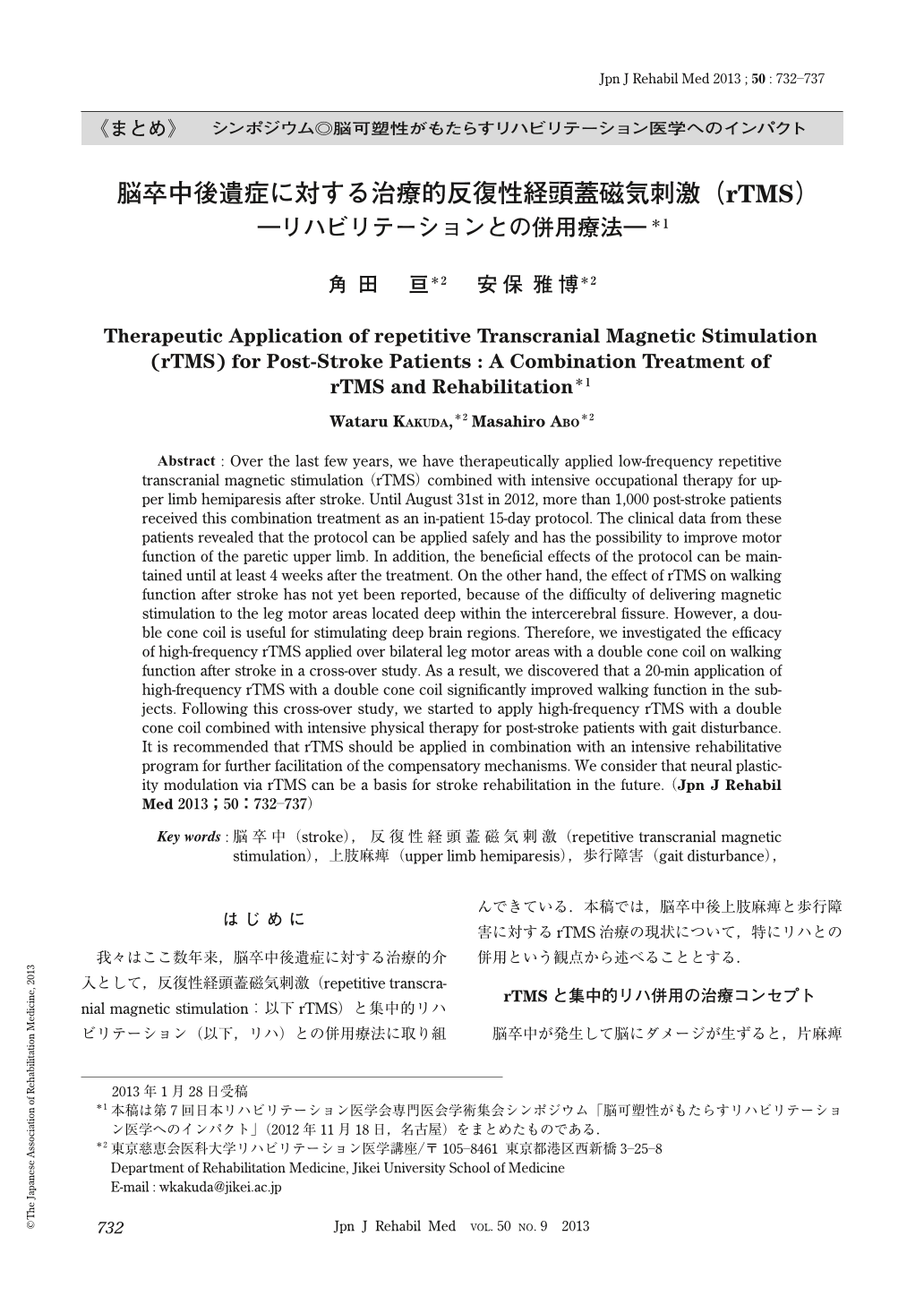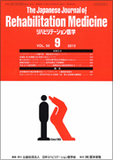Japanese
English
- 販売していません
- Abstract 文献概要
- 1ページ目 Look Inside
- 参考文献 Reference
はじめに
我々はここ数年来,脳卒中後遺症に対する治療的介入として,反復性経頭蓋磁気刺激(repetitive transcranial magnetic stimulation:以下rTMS)と集中的リハビリテーション(以下,リハ)との併用療法に取り組んできている.本稿では,脳卒中後上肢麻痺と歩行障害に対するrTMS治療の現状について,特にリハとの併用という観点から述べることとする.
Abstract : Over the last few years, we have therapeutically applied low-frequency repetitive transcranial magnetic stimulation (rTMS) combined with intensive occupational therapy for upper limb hemiparesis after stroke. Until August 31st in 2012, more than 1,000 post-stroke patients received this combination treatment as an in-patient 15-day protocol. The clinical data from these patients revealed that the protocol can be applied safely and has the possibility to improve motor function of the paretic upper limb. In addition, the beneficial effects of the protocol can be maintained until at least 4 weeks after the treatment. On the other hand, the effect of rTMS on walking function after stroke has not yet been reported, because of the difficulty of delivering magnetic stimulation to the leg motor areas located deep within the intercerebral fissure. However, a double cone coil is useful for stimulating deep brain regions. Therefore, we investigated the efficacy of high-frequency rTMS applied over bilateral leg motor areas with a double cone coil on walking function after stroke in a cross-over study. As a result, we discovered that a 20-min application of high-frequency rTMS with a double cone coil significantly improved walking function in the subjects. Following this cross-over study, we started to apply high-frequency rTMS with a double cone coil combined with intensive physical therapy for post-stroke patients with gait disturbance. It is recommended that rTMS should be applied in combination with an intensive rehabilitative program for further facilitation of the compensatory mechanisms. We consider that neural plasticity modulation via rTMS can be a basis for stroke rehabilitation in the future.

Copyright © 2013, The Japanese Association of Rehabilitation Medicine. All rights reserved.


